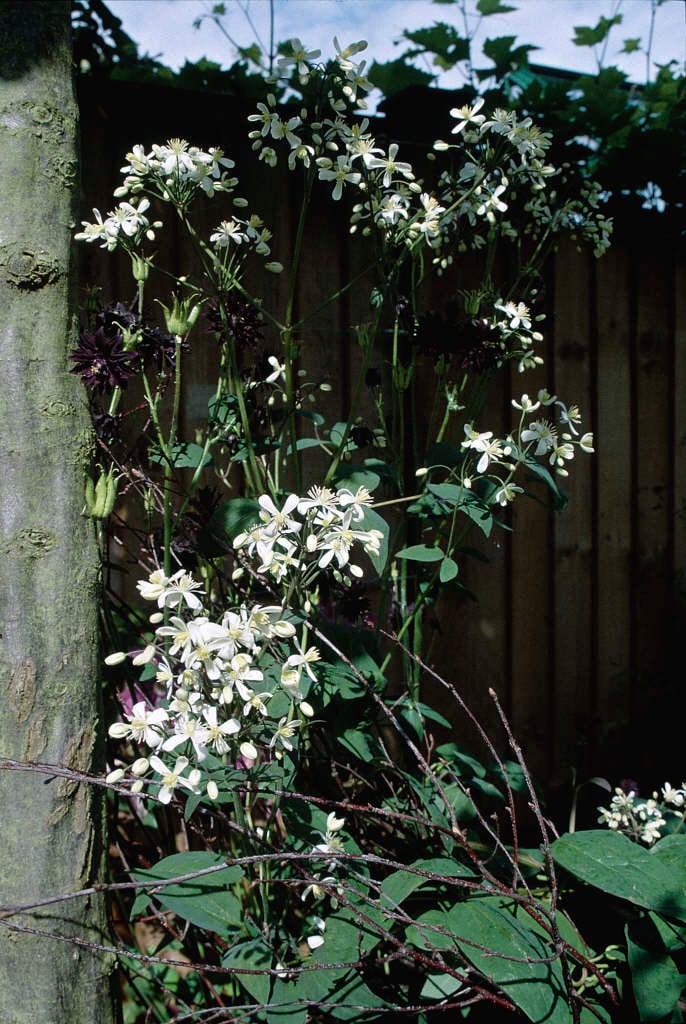Size
Ultimate height
1–1.5 metresTime to ultimate height
2–5 yearsUltimate spread
0.5–1 metresGrowing conditions
Moisture
Moist but well–drainedpH
Acid, Alkaline, NeutralColour & scent
| Stem | Flower | Foliage | Fruit | |
| Spring | Green Purple | |||
|---|---|---|---|---|
| Summer | White | Green Purple | ||
| Autumn | White | Grey Silver | ||
| Winter |
Position
- Full sun
Aspect
West–facing or East–facing or South–facing
Exposure
Sheltered Hardiness
H6Botanical details
- Family
- Ranunculaceae
- Native to GB / Ireland
- No
- Foliage
- Deciduous
- Habit
- Bushy
- Potentially harmful
- Skin irritant. Wear gloves and other protective equipment when handling. Pets (rabbits): Harmful if eaten. For further information and contact numbers regarding pets, see the HTA guide to potentially harmful plants
- Genus
Clematis can be deciduous or evergreen shrubs or herbaceous perennials, mostly climbing by twining leaf-stalks, and often with showy flowers. Some have attractive fluffy seedheads in autumn
- Name status
Accepted
- Horticultural Group
- Flammula Group clematis can be vigorous deciduous climbers or herbaceous perennials; the small star-shaped flowers open in summer and autumn, and are usually fragrant, followed by silky seed heads
How to grow
Cultivation
Plant in a moisture-retentive, well-drained soil. Keep the base of the plant and roots cool and shaded by other plants or a layer of pebbles or flat stones at the base. Plant with the crown of the clematis at soil level. Mulch in late winter with garden compost or well-rotted manure, avoiding the immediate crown. Ideal for a border where it can be supported by other plants or useful groundcover. See clematis cultivation for more advice
Propagation
Propagate by division or take basal cuttings in spring or semi-ripe cuttings in early summer
Suggested planting locations and garden types
- Cottage and informal garden
- Patio and container plants
- City and courtyard gardens
- Flower borders and beds
- Wall side borders
Pruning
Pruning (clematis) group 3. Cut back all the previous years stems to 15-20cm (6-8in) above soil level, before growth begins in spring
Pests
May be susceptible to aphids, snails and caterpillars; petals may be eaten by earwigs
Diseases
May be susceptible to honey fungus (rarely), clematis wilt and clematis slime flux
Get involved
The Royal Horticultural Society is the UK’s leading gardening charity. We aim to enrich everyone’s life through plants, and make the UK a greener and more beautiful place.
